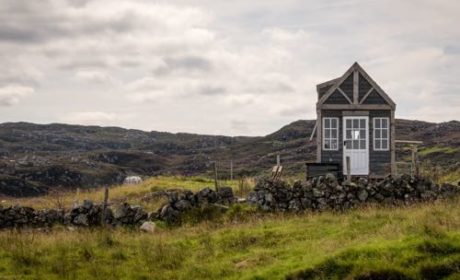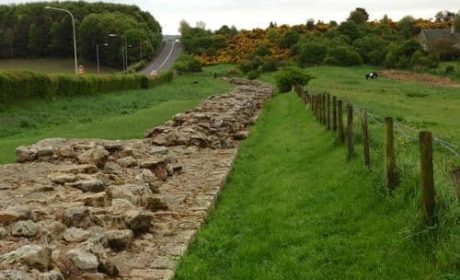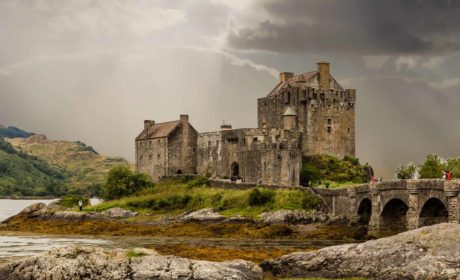Is a day trip to the Orkney Islands on your to do list? I’m attracted to the off-the-beaten-path travel destination, although I’ve yet to visit.
My Itchy Travel Feet featured contributor, Debi Lander from ByLanderSea, recently explored Scotland. She’s here to share her experience on an Orkney day trip.
Slow travel allows for unplanned adventures and that is what Judy, my travel buddy and I found on a Scotland road trip. When we reached Inverness, we signed up for a 14-hour day-trip to the remote Orkney Islands, knowing we’d likely never get another chance.
The Orkney’s, an archipelago of 70 small islands in the North Sea, off the northeastern coast of Scotland, have a mysterious appeal.
Table of Contents
Day Trip to the Orkney Islands begins

Up before dawn, we boarded a bus for the four-hour drive to John O’Groats, the furthest point from Land’s End in the southwest of England. While the ride is long, the spectacular scenery more than makes up for the inconvenience of sitting. I’d have made many stops if making the trip by car.

Mandatory photos of the John O’Groats mile marker were all we saw of the city before grabbing some lunch. The group then caught the ferry for a 40-minute crossing of the Pentland Firth, one that proved to be a wild and rough ride. Onto mini buses, we skirted to Kirkwall, the capital and largest city of the Orkneys.
Boomer Travel Tip
Book your Orkney Island day trip here.
Exploring Kirkwall in Orkney

The most historic site remains St Magnus Cathedral, begun in the 12th century. A self-tour of the interior followed photographs of the Romanesque exterior. Interesting, but nothing extraordinary. Many went shopping for little souvenirs.

My most vivid memories of Kirkland will remain the story about the annual Ba’ (ball) game. The ancient game of mob ball, played only in Kirkwall, involves two free-for-alls, on Christmas and New Year’s Day.
According to an article from Outside Magazine: Hundreds of Kirkwall’s men (no limit on team size), north-siders (“Uppies”) versus south-siders (“Doonies”), meet head-on and rampage through the streets trying to keep possession of a three-pound, handcrafted leather ball—the ba’—modeled after a human head.
With no clock or referee, the game starts at one o’clock, and often rages into the night, mindless of any nasties, like blizzards, gales, waves. The Doonies have to dunk the ba’ in the harbor to win, while the Uppies have to touch the ba’ to a wall called the Long Corner on the far side of town.
Otherwise, anything goes: The players can kick, punch, head-butt, smash out windows, break down doors, run through houses, or advance the ball by stuffing it down the sewer and fishing it out a few blocks away (all time-tested tactics, by the way). Life on a remote island must make the event the talk of the year.
Our time in Kirkwall up, the group bussed across the Churchill Barriers. Unknown to me before this, I listened intently as our guide explained their construction at Scapa Flow, a naval base and harbor.
Learning about the Churchill Barriers

In October 1939 during WWII), a German U-boat slipped undetected into Scapa Flow. The Germans launched a torpedo attack on the battleship HMS Royal Oak anchored there. Within minutes the massive ship sank, killing 833 crew members.
The U47 slipped away undetected and the terrible loss prompted a call for more naval protection. In March 1940, Winston Churchill approved the building of four causeways to link the south isles to Mainland Orkney, thus blocking further access from the sea.
Our next stop involved the builders of those barriers, some prisoners of war who also constructed the unlikely Italian Chapel from Quonset huts. I’d never heard this story either. My goodness, quirky Orkney was full of surprises!
Boomer Travel Tip
MedjetAssist Members who are hospitalized 150 miles from home receive medical transport to a home-country hospital of choice. Memberships from $99.
Visiting the Nissen hut church

Italian prisoners of war were brought to Orkney in 1942 and housed on the island while they constructed the Churchill Barriers. The camp’s Catholic priest suggested a place of worship was needed.
With limited supplies, the men joined two Nissen huts end-to-end and covered the corrugated interior with plasterboard. An altar and altar rail came from concrete left over from work on the barriers.
The workers created a concrete facade, concealing the shape of the hut and making the building look like a church. Corned-beef tins served as light holders. The baptismal font finagled from the inside of a car exhaust covered in a layer of concrete.

Building restoration in the 1960s and repair again in the 1990s make the place an inviting stop, with the little Italian Church a delightful wonder.
Discovering Skara Brae, a prehistoric Neolithic settlement

Already happy to have come, my main reason for visiting the Orkney’s lay ahead—investigation of the archeological finds at Skara Brae, a prehistoric Neolithic settlement. The perfectly preserved remains lay hidden under sand dunes for about 4,000 years and were not discovered until a tumultuous winter storm hit in 1850.
The stone dwellings and furniture date back 5,000 years, so long ago I find it difficult to grasp. The residents built this settlement around 3,100 BC, before the Pyramids or Stonehenge. I found the unexpectedly complete village utterly amazing.
If you visit the UNESCO site, first watch a video and tour the small museum. Then, meander through a circular-shaped replica house before strolling around the interconnected remains. The little gnome-like dwellings in the turf, with beds set into the walls, are sure to impress.
Stopping to see an Orkney Island manor house

Most of my group also went inside the nearby manor home of the owner who discovered the find. Skaill House, originally built in 1620 by Bishop Graham, underwent additions by successive Lairds over the centuries.
Now, after careful restoration work, the house looks very much like it did in the 1950s. Highlights include Captain Cook’s dinner service, Neolithic and iron age finds, paintings by famous Orkney artist Stanley Cursiter, the Bishop’s original bed, among the many other items of interest collected by the twelve Lairds of Skaill.
Standing at the Ring of Brodgar

We departed for the Ring of Brodgar, also part of the Neolithic Orkney World Heritage site. It is one of the finest stone circles in the world, dating back from 2,500 to 2,000 BC.
While not fully understood, its possible uses include an astronomical observatory, religious shrine or for rituals. The stone ring measures 340 feet wide, and originally contained sixty megaliths; today only twenty-seven of these stones remain.
Visiting the Stones of Stenness

We went on to another Stone-Age ceremonial center called The Stones of Stenness. Although mid-August, the drizzle and windy UNESCO World Heritage site chilled everyone to the bone. A quick walk around left me too cold to appreciate its marvel.
We warmed up on the mini bus as it headed back to the dock to complete our tour of the Orkney’s and return to John O’Groats. This ferry ride ranks as one of the roughest of my life, waves crashing with a force that reminded me of those in the film, The Perfect Storm. (Okay, I’m exaggerating but was glad I’d taken Bonine for seasickness ahead of time.)
Back aboard the big bus, we stopped to pick up pre-ordered food and continued back along the coast. The scenery at this time of day was utterly magnificent, but my out the window photography attempts failed. I settled back and simply took it all in, increasing my love for Scottish landscape.

By the time we arrived back to Inverness, night had fallen. In retrospect, I’d make the long day trip again although bus time consumes a lot of the adventure.
I’d highly recommend the outing to those that have an interest in archeology or history and have a full day. The scenic landscape in the Northern Highlands is downright spectacular and the Orkney’s desolate, eccentric and otherworldly enough to demand a visit.
A luxury cruise in Scotland provides an Orkney Island experience without the long bus ride.




